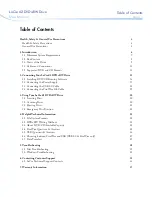
II K 5-13
Installation
20
Industrial low
voltage lines
Industrial low voltage lines are local lines in plants or factories.
They have own supply transformers (see
6
). In most cases they
are insulated (IT network / no earthed star point) and their voltages
are often higher than 400 V. The loads tolerate higher noise levels.
Therefore and because industrial lines are decoupled from public
lines by their transformers and distances, converters do not need
EMC filters at industrial low-voltage lines (see
6
). Problems for
other loads on the same line caused by commutation notches can
be solved with the aid of line chokes (see
4
).
Insulated lines must have also an earth conductor. The earth con-
ductor is important for the feedback of parasitic RF noise currents
from the DC motor via the converter to the earth point of the supply
transformer of the line. Without such a conducted feedback the
loop of the parasitic RF noise current is closed via the earth with
the result that roving parts of this current can interfere with elec-
tronic equipment far away from the drive.
21
Fuses at the
stubs from the
low voltage line
At the stubs the cross-sections of the conductors become lower
than in the main cable. Therefore fuses are prescribed which are
adapted to the reduced cross section, and they must be located
close to the stubs. This principle must be repeated at each reduc-
tion of the cross section from the stub at the main cable via the
distribution net in a house or factory down to the connection point
of a converter. The resulting fuse hierarchy is not shown in figure
5.2-1. Only the fuses of the lowest rank are mentioned. They are
indicated at the top of the converter units. However, if the distance
to the stub is too long the fuses must be located at the stub and not
at the converter unit. This is the base for the connection example at
the beginning of
24
.
22
Fast Fuses
The converters are protected against overload by their control
systems. Therefore dangerous overcurrents can be caused only by
faults in the converters themselves or in the loads. In such cases
the thyristors can be protected only with the aid of special fast
fuses. Such fast fuses are shown directly at the AC connection
points of the converters in figure 5.2-1 as well as in the connection
example, with more details, at the beginning of
24
. But fast fuses
outside the converters are necessary only for units of the lower
power range. Larger converters comprise the fast semiconductor
fuses.
23
Stub for auxil-
iary devices
Examples for auxiliary devices: field supply converters, transform-
ers, fan motors.
Содержание DCS 400
Страница 1: ...II K 1 1 DCS Thyristor power converter for DC drive systems 20 to 1000 A 9 to 522 kW Manual DCS 400 ...
Страница 24: ...II K 3 14 Technical data ...
Страница 29: ...II K 4 5 Overview of Software ...
Страница 158: ...II K 6 36 Operating Instructions ...
Страница 181: ...II K B 1 Appendix B Declaration of conformity ...
Страница 190: ...Notices ...
Страница 191: ...Notices ...
















































